Let’s take a closer look at some of the largest arachnids in the world and learn about their behavior and ecosystems.
1. Goliath Birdeater Spider
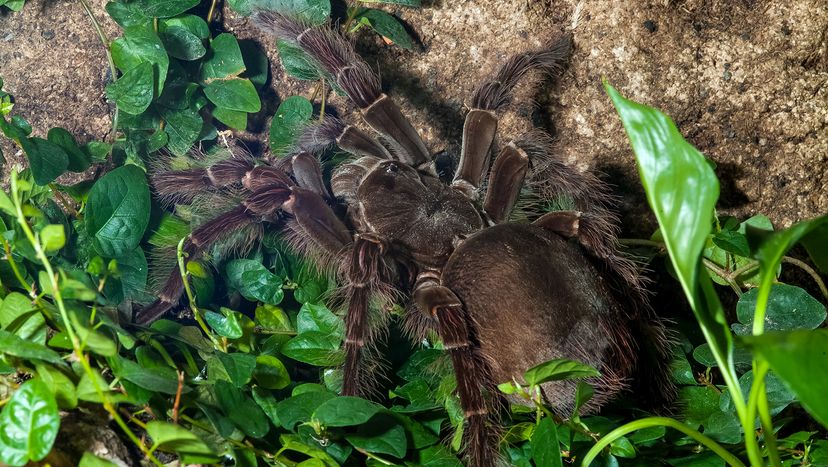
Goliath bird eater spider.
Jasius/Getty Images
Well, this spider (sometimes incorrectly called the Goliath bird-to eat spider) is huge, but it doesn’t eat birds often enough to justify the name. That said, at least half of the Goliath bird eater’s name is correct, because it is a true giant.
It is the world’s largest spider – and the heaviest. Native to the rainforests of South America, this Goliath weighs as much as a hockey puck, with a body the size of a medium-sized smartphone and a leg span of up to 30 centimeters.
Is the Goliath bird eater dangerous?
Although it has an intimidating name and size, this tarantula, as large as its face, is relatively harmless to humans thanks to its docile nature. Its venom is not very poisonous to us, so to protect itself it uses unique defense tactics.
Instead of injecting venom when threatened, it releases burning hairs from its abdomen. These barbed hairs burrow into the skin of larger predators or humans who attempt to handle the spider, causing a burning pain and giving them ample reason to retreat.
The tarantula also makes a distinct sound by rubbing its hind legs together – a process known as stridulationsimilar to the chirping of crickets. It can be heard by humans and animals from a distance of up to 4.6 meters.
What Do Goliath Bird Eaters Eat?
All kinds of critters are on the menu of this behemoth, while the bird eater hunts insects, frogs, small rodents and occasionally birds.
As a ground hunter, it uses its powerful neurotoxin to immobilize prey on the ground before dragging it back to its den for a private feast. The neurotoxin liquefies the inside of the prey, which the spider then consumes.
Bird eaters as pets
In the exotic pet trade, these spiders are prized for their size and longevity, with females living up to twenty years – significantly longer than their male counterparts, which can live up to six years in captivity.
2. Giant huntsman spider
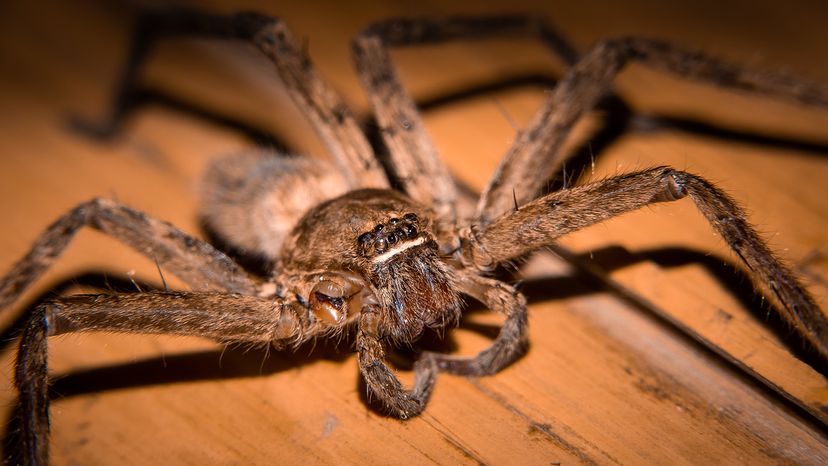
Giant huntsman spider.
Jeroen Mikkers / Shutterstock
This long-legged spider may not be as famous as its bird-eater cousin, but… it’s a record breaker on itself. The hunter has a chance to win the title of having the largest leg span of any spider in the world: a whopping 30 centimeters.
This hunter, discovered in a cave in Laos, doesn’t build a web. Instead, true to its name, it roams and hunts, displaying incredible speed and agility. Unlike many of its relatives, the huntsman spider prefers cave walls to forest floors, making it a fascinating subject arachnologists.
Are Giant Huntsman Spiders Dangerous?
Although its appearance may seem intimidating, this spider is generally shy and avoids human contact. The venom, while powerful enough to subdue its prey, is not considered dangerous to humans.
So while their size can be awe-inspiring, huntsman spiders are a wonder of nature rather than a threat, and play a crucial role in controlling insect populations in their habitat.
A desert cousin
If you venture into the deserts In the Middle East you may also find a smaller relative of this species, known as the sand-dwelling huntsman spider. This nocturnal species waits all day buried beneath the sand dunes and then emerges at night to chase small ground-dwelling animals.
3. Brazilian Salmon-pink Birdeater
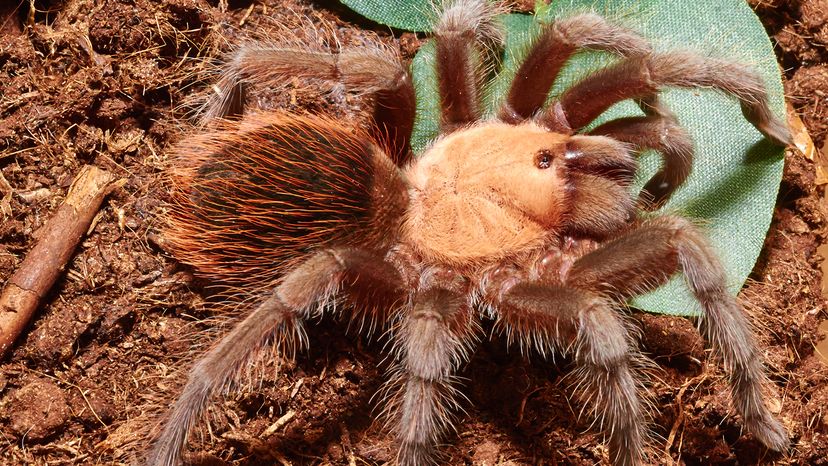
Brazilian salmon pink bird eater.
tatianaput / Shutterstock
The Brazilian salmon-pink birdeater (Lasiodora parahybana) is a sight to behold in the spider world. This species is one of the most impressive tarantulas, known for its considerable size.
With a leg span that can reach 10 inches (25.4 centimeters), it’s like encountering a sign skittering across the forest floor.
Hailing from northeastern Brazil, what stands out is not only their size, but also their beautiful, salmon-pink hair, which gives them a unique flair among tarantulas.
Despite their fearsome size and appearance, bird eaters are known for being relatively docile. They may have intimidating fangs, but their venom is mild on humans, making them more of a gentle giant in the spider kingdom.
Beware of the Brazilian wandering spider
In Brazil you can also encounter the Brazilian wandering spider, which stalks the jungles of South America and causes a painful bite that can also be dangerous to humans.
This species family has a wingspan of up to 18 centimeters and is also known as banana spider, as it tends to hide during fruit shipments and may pose a threat to hapless dock workers.
4. Hercules baboon spider
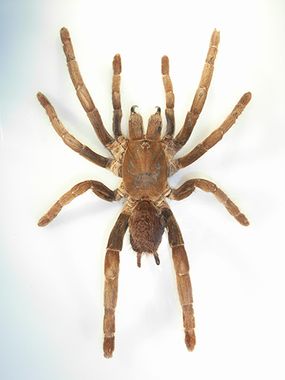
Hercules’ baboon spider
Notafly / Wikimedia Commons
The Hercules baboon spider (Hysterocrates Hercules) is a bit of an enigma in the spider world, and a name like “Hercules” certainly sets high expectations.
This species, native to Central African countries like Nigeria, is said to be one of the largest tarantulas in the world, yet it remains shrouded in mystery. Sightings are rare, making it a legend among arachnid enthusiasts.
Its supposed size, with a leg span that could rival the largest spiders, adds to its mythical status. Some estimates suggest that leg span could be around 8 inches (20.3 centimeters) or more, but these figures should be taken with caution as they are based on limited observations and anecdotal reports.
Despite its formidable name, the Hercules spider is more withdrawn than aggressive. It prefers to remain hidden, making its true size and habits subject to speculation. If you are lucky enough to spot one, you are witnessing a rare moment in the wild.
Another baboon spider
Similar in size and appearance to this species is the king baboon spider, which lives in deep caves among the grasslands from East Africa and can rub its legs together like a cricket to make noise.
This beep is a warning to trespassers and politely lets them know that they are within striking distance.
5. Colombian giant tarantula
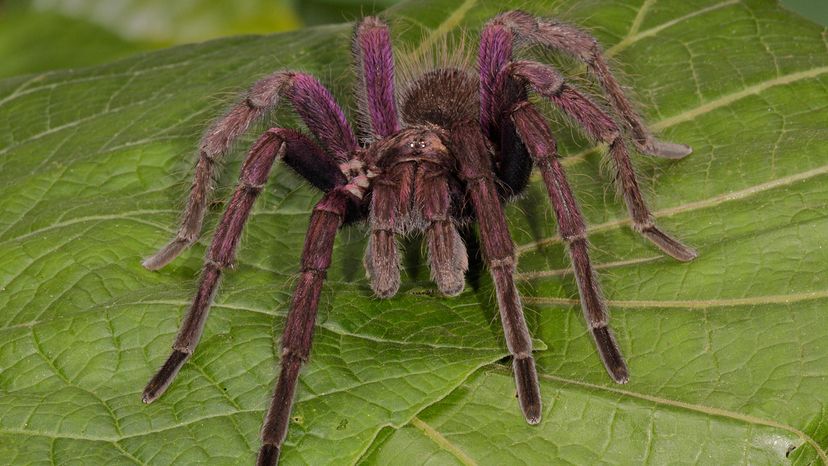
Colombian giant tarantula.
Robert Oelman/Getty Images
The Colombian blue flower tarantula (Pamphobeteus nigricolor), a dazzling inhabitant of the Colombian rainforests, stands out for its striking blue color. With a leg span that can reach as much as 7 inches (17.8 centimeters), it is not only a visual spectacle, but also has a considerable size.
Known for its relatively docile nature, the Colombian blue bloom can still be a handful due to its skittishness, making it an engaging yet challenging pet. Ideal for those who appreciate beauty from a distance. This tarantula is more of a show species, thriving in a quiet environment with minimal interference.
Its preference for solitude and the unique charm it brings to a terrarium make the Colombian tarantula a beloved species among tarantula enthusiasts.
9. Colombian Little Black Tarantula
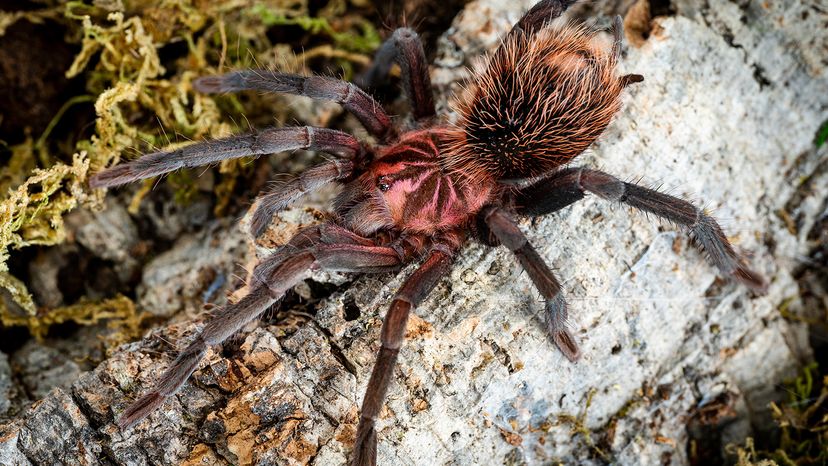
Colombian little black tarantula.
tempic / Shutterstock
The blue bloom isn’t the only huge tarantula from the rainforests of Colombia. The little black tarantula (Xenesthis the monster) really stands out in the world of arachnids.
With a leg span of up to 17.8 centimeters, the size alone is enough to attract everyone’s attention. But it’s the stunning visual contrast of its deep black body, decorated with vibrant spots, that makes it a true spectacle.
Despite its imposing appearance, the lesser black is known for its relatively docile temperament, making it a sought-after species among tarantula enthusiasts and keepers. However, its size and strength require respect and careful handling.
In captivity, these tarantulas can live for a considerable amount of time. Females generally live longer than males, with lifespans ranging from 12 to 20 years for females and up to five years for males.





